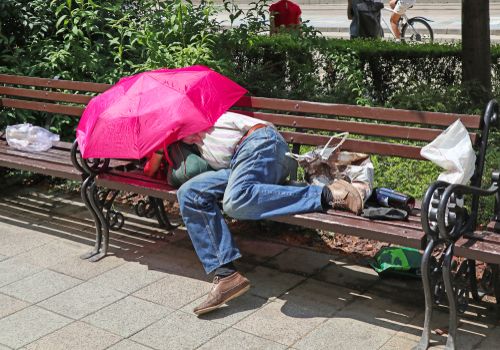 Winter months are a palpable threat to the homeless population in your city. Freezing temperatures and wintry precipitation can make living on the streets unbearable and sometimes even dangerous. Many churches have yearly plans in place to ensure that the unhoused are getting warm meals and clothing and have access to shelter from the elements during the winter months.
Winter months are a palpable threat to the homeless population in your city. Freezing temperatures and wintry precipitation can make living on the streets unbearable and sometimes even dangerous. Many churches have yearly plans in place to ensure that the unhoused are getting warm meals and clothing and have access to shelter from the elements during the winter months.
The homeless in your city have needs that are specific to summer, too. Temperate seasons provide a little reprieve, but their basic needs of food, clothing and shelter still exist. If you are in an area that experiences extreme heat during the summer, there are additional issues that the homeless face, and your church can provide relief.
Basics
Most major shelters and soup kitchens in your city probably remain open all year, but some of the smaller enterprises may shut down when the needs they meet are minimal. The basic needs of food, clothing and shelter never completely go away, though, and they may tax the resources of the places that stay open.
To make sure these organizations have the support they need to function well during the summer, your church can take the initiative to maintain awareness of their needs through various means:
- Following their social media accounts
- Boosting awareness by sharing their posts on your own accounts
- Maintaining relationships with specific contacts within each organization
- Initiating donation drives on their behalf
Hydration
Human beings always need water to survive, but the threat of dehydration is amplified when it's hot outside. The more people sweat, the more water they need to replenish what they are losing. Because this need often goes unmet, homeless people are in greater danger of heat stroke when temperatures reach the triple digits.
There are solutions you can offer both as a faith community and an individual within it. If your church building is in a well-populated area that sees a lot of foot traffic from the homeless, consider setting up a table outside to hand out bottles of water during the heat of the day. Alternatively, you could staff your community center with volunteers and give people a chance to escape the heat and get a drink or a light snack during certain hours of the day. While it's not advisable to leave plastic bottles of water in your unoccupied car when it's extremely hot outside, you can grab a few extra bottles every time you leave the house to hand to people standing at intersections.
Sun Protection
People who are outside on a regular basis need sun protection all year, but it is especially important during the summer. When coupled with dehydration, sun damage to the skin can be more severe, and the extra heat from a sunburn can exacerbate risk of heat stroke. Anything you can do to provide protection from the sun is particularly helpful to the homeless during the hottest months.
Reliable shelter offers the chance to get out of the sun, particularly during the most intense parts of the day. Consider building an awning over an outdoor seating area, and make sure everyone knows they are welcome to use it as shade. Start a donation drive to collect sunscreen and umbrellas so that you can provide the homeless with protection as they move around the city.
Caring for the homeless in your city is a year-round task. While some basic needs remain the same, a change in the seasons usually means that other issues arise. Partner with local organizations that stay informed about the specific needs that you can help meet, and support their efforts. Be mindful of the risks that are specific to extreme heat and make a commitment to do whatever you can to address them both corporately and personally.



